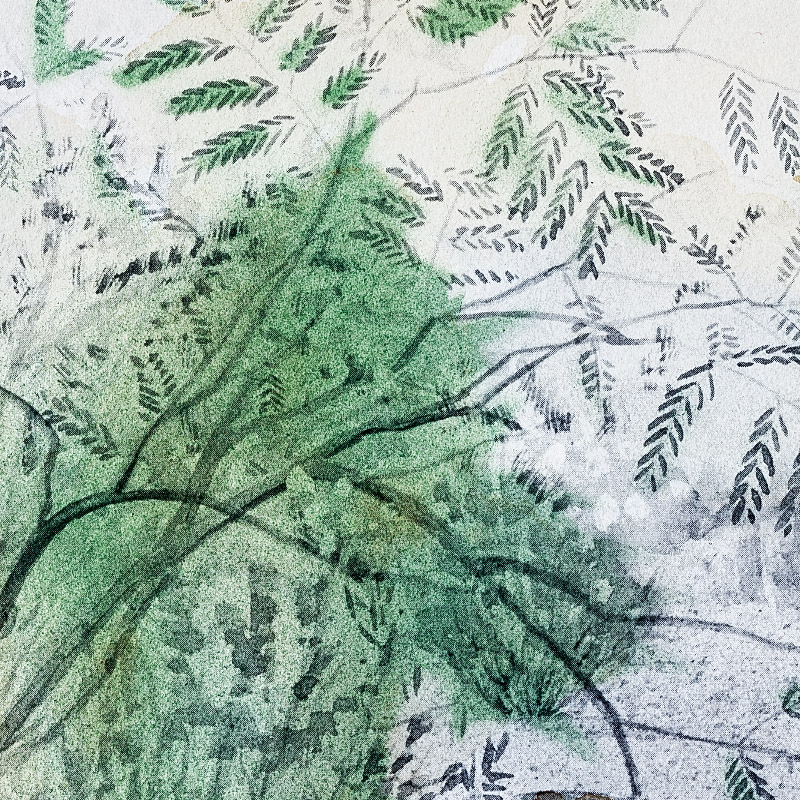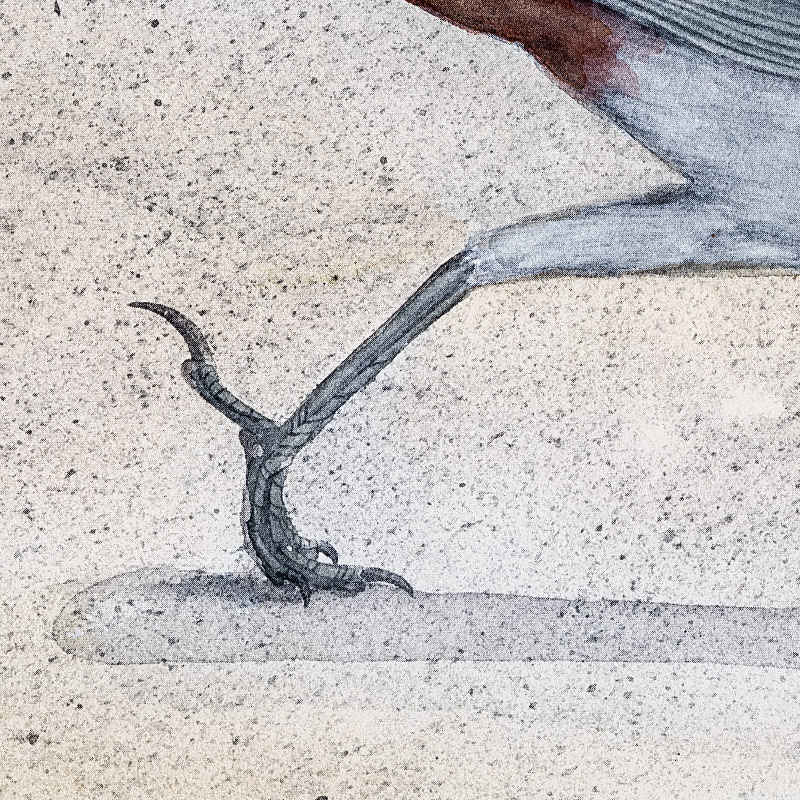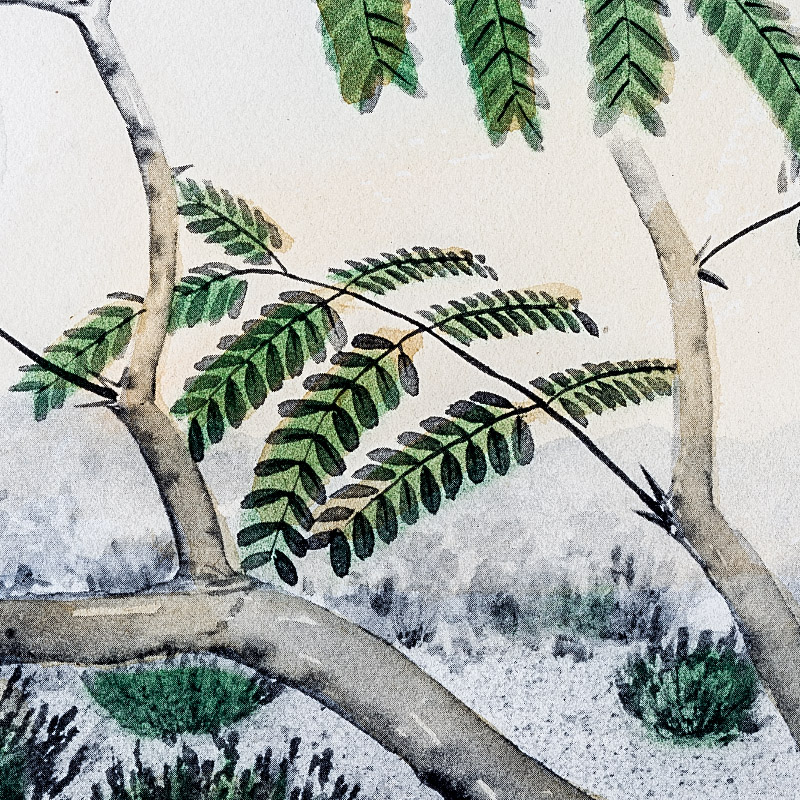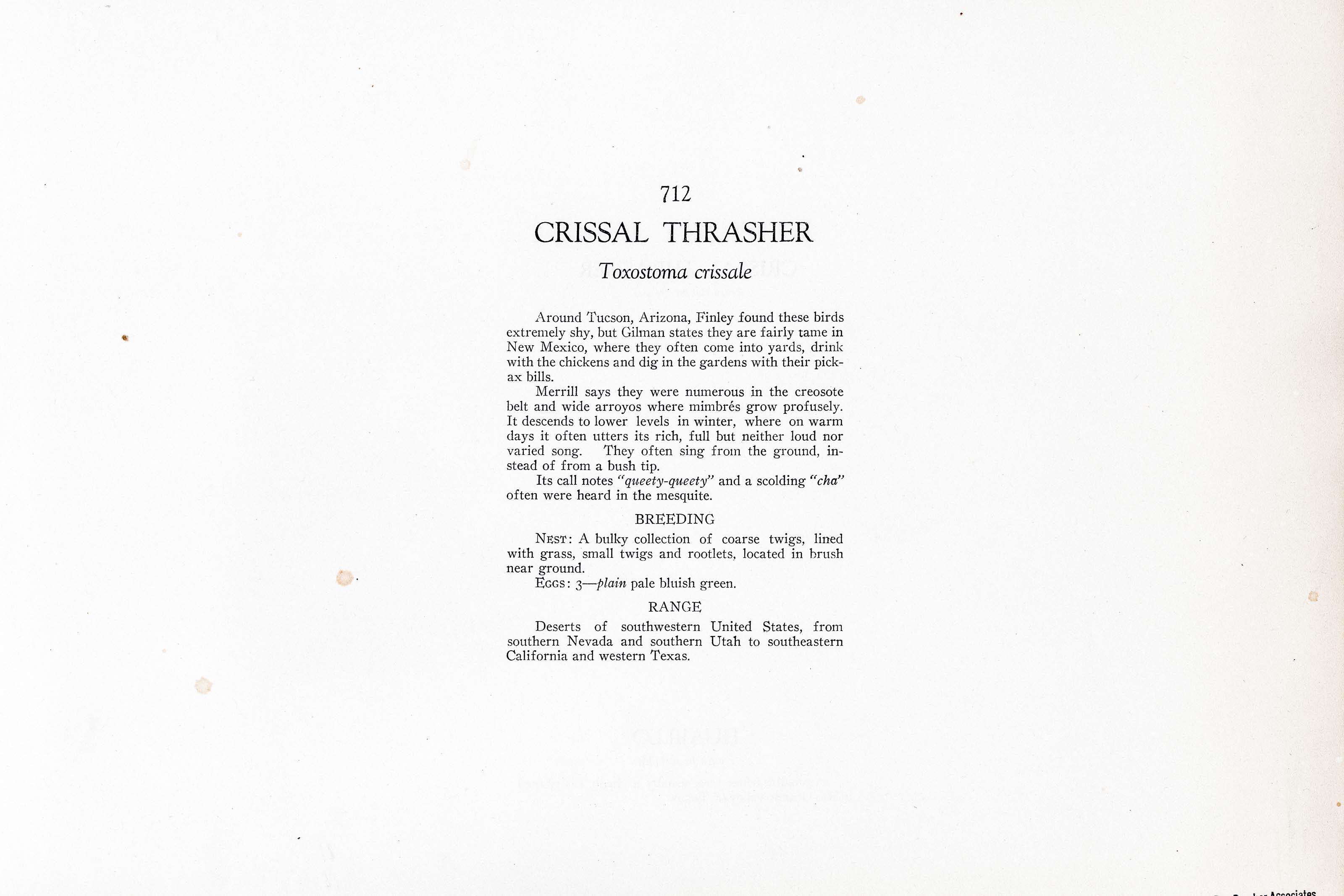






1912
1930
11
712
A team of dedicated board members, volunteers, and student interns has published every page in Volume 9. This volume includes 360 images of paintings and lyrical descriptions of birds, now available online for everyone to enjoy anywhere in the world. This is a monumental task. Each volume requires approximately 400 hours to photograph, edit, transcribe, catalog, and publish online. We need your support to complete this work.
If you're tech-savvy, have a good eye, are meticulous with details, and love structured data, please consider volunteering by emailing us at hello@rexbrasher.org.
We encourage all bird lovers and supporters to consider a monetary donation to support our mission to make Rex's work available for everyone. You can provide a one-time or recurring donation online.
Around Tucson, Arizona, Finley found these birds extremely shy, but Gilman states they are fairly tame in New Mexico, where they often come into yards, drink with the chickens and dig in the gardens with their pickax bills.
Merrill says they were numerous in the creosote belt and wide arroyos where mimbrés grow profusely. It descends to lower levels in winter, where on warm days it often utters its rich, full but neither loud nor varied song. They often sing froin the ground, instead of from a bush tip.
Its call notes "queety-queety" and a scolding "cha" often were heard in the mesquite.
NEST: A bulky collection of coarse twigs, lined with grass, small twigs and rootlets, located in brush near ground.
Eggs: 3 — plain pale bluish green.
Deserts of southwestern United States, from southern Nevada and southern Utah to southeastern California and western Texas.
A small 25-foot tree, usually a shrub, distributed in Rio Grande Valley of Texas.